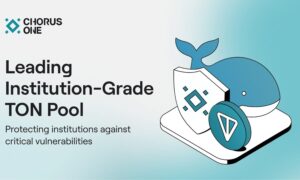Not every cyberattack ends with a ransom note that requests money.
Even so, if hackers want to tear down your reputation or slow down your work processes, ultimately it’s your finances that will suffer the most.
Most companies pay the ransom because they want to hide the fact that they’ve been breached. That’s because it’s virtually impossible to rebuild the trust of your customers once it’s lost.
Hackers don’t even have to leak information for clients and customers to lose trust. When they find out about the breach, they associate the business with the attack and start avoiding its services like the plague.
Breaches that slow down your network or eCommerce website aim to decrease the productivity of your team or make your site so slow that customers end up abandoning shopping carts.
Recovery of your systems following an attack is where companies lose money the most. You must fix flaws in your systems and invest in security tools or reinforce existing security – a costly endeavor. And so, unprepared companies go out of business due to the recovery period.
Therefore, every business needs strong, pre-emptive cybersecurity to avoid major financial damage.
What are some of the best practices that you can employ within your company to protect yourself from cyberattacks?
Set up Security Controls
Security controls refer to any protocols, software, and hardware your company has that safeguard your organization.
To be completely safe, your security points need to include protection on administrative, physical, and operational levels.
On an administrative level, set up rules, protocols, and emergency procedures. This ensures that your IT team is on the same page about what to do in different scenarios.
Many companies also have cybersecurity courses that provide guidance to less tech-savvy employees. With this training, they can recognize some of the attacks and notify the company’s IT team early on.
On the physical level, it’s all about protecting the personnel and hardware. Physical threats may not be the first thing that pops into your mind, but you cannot forget to protect your business from possible physical harm and external damage.
Operational level refers to any system working hard to ensure that your controls are effective, including authentication and access controls.
Manage Your Security Posture
Since your teams and customers use your systems and networks constantly, the security posture can change within minutes.
This means that it’s not possible to set up security points and leave it at that. Security systems you have need to be managed — this includes regular assessment and patching up possible flaws in the system.
When you have a lot of security controls, it’s necessary to make sure that your IT uses them correctly and that there aren’t any vulnerabilities in your network.
To avoid getting overwhelmed with the overgrowing list of tasks that need to be done for security, smart companies use Extended Security Posture Management to manage their systems.
This management system helps you control and assess your security points on a regular basis. To do so, it relies on:
- Breach and Attack Simulation
- Continuous Automated Red Teaming, and
- Advanced Purple Teaming
These three systems test your security on different levels.
Breach and attack are focused on confirming whether the software you have can protect your company against likely breaches.
On the other hand, red teaming is more focused on testing people who manage your security. It tests whether they can notice that hackers are attempting to breach the network and react on time using the tools you have.
Purple teaming is similar to red teaming, but it relies on a more collaborative approach to security testing. To test the strength of security, purple teaming approaches security like an adversary.
How do you know what to test when checking if your security is going to withstand a cyberattack? Start with testing it against the most likely and new techniques.
MITRE Attack Framework is the resource that most corporations and governments use to decide what should be tested in their security. The Framework describes recent techniques that cybercriminals used to breach networks.
It’s difficult to predict cybercriminal behavior, but you can learn from successful breaches that transpired in the past. This helps you discover vulnerabilities in your company’s system early.
Strengthen Your Security Posture
Following testing, your IT team should go over the data of these simulated attacks. If you use Breach and Attack Simulation, you’ll have a lot of information that compares your system before and after the simulated attack.
Use this data to decide which of the vulnerabilities in your system are high risk, i.e. likely to get you breached. After that, patch up flaws in the system starting with the most pressing weaknesses within your network.
Another way to use simulation attack data is to decide which parts of the system need further regular testing.
For every simulated attack, you must choose which part of the network is going to be tested. You can also set the simulation for a certain type of attack to run all the time.
For example, phishing is a frequent attack and hackers have been using it for a long time. You can choose a phishing attack as a vector to continually test if your systems can protect you.
Where to Start with Cybersecurity?
Cyber protection can be overwhelming for businesses, not to mention costly, if you don’t use it right.
Start by setting up security points that make sense for the size of your company and the types of systems you rely on to operate.
After the systems are installed and prepared, continually manage your security points and assess them against the latest attacks.
The last step is to fix any flaws that have been discovered within your system.
For strong security at all times, repeat those three steps.



































